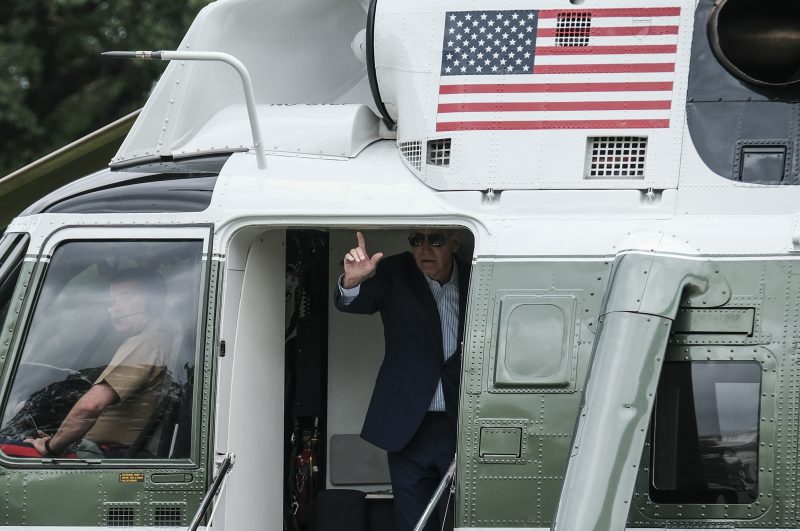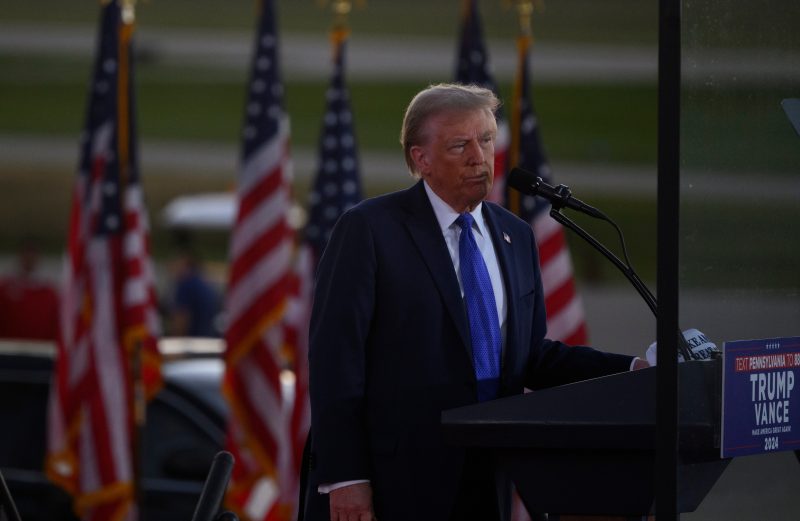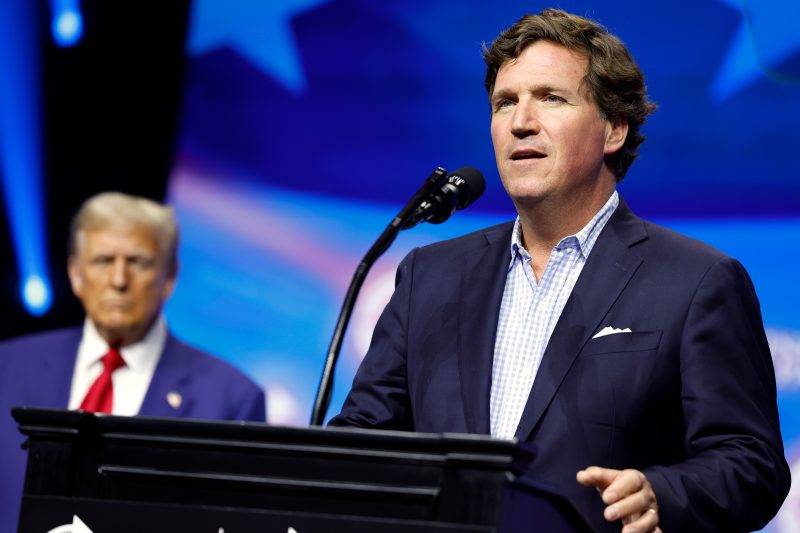
Biden cease-fire push falters again after new demand by Hamas
President Joe Biden’s months-long push for a cease-fire and hostage release deal between Israel and Hamas has been upended again in recent days, putting the deal on life support as U.S. officials say they have indefinitely postponed their plan to present the two sides with a “take it or leave it” proposal.
The latest obstacle — the abrupt introduction by Hamas of a new demand surrounding which prisoners Israel would release — underscores the frustrating, often excruciating process that has preoccupied top U.S. officials, and Biden himself, for nine months. At several recent points the United States, along with Qatar and Egypt, believed a deal was within reach, only for Israel or Hamas to derail the talks with new demands that set negotiators back weeks or months.
Overall, Biden’s chances of ending the 11-month war in Gaza and bringing home the remaining hostages before he leaves office appear ever more remote, making it more likely that he will end his presidency without mediating an end to the conflict that engulfed his final year in office and threatens to tarnish his legacy.
Negotiators increasingly fear that neither Israel nor Hamas is truly motivated to reach a deal. White House officials, lawmakers and diplomats say a cease-fire is key not only to addressing the tragic humanitarian situation in Gaza and releasing the remaining hostages, but also to avoiding a broader regional war.
“Most days, it’s pretty clear the Americans are working much harder than the Israeli government is working at this,” said Sen. Chris Murphy (D-Conn.), a senior member of the Senate Foreign Relations Committee. “I think [a cease-fire] has been not a terribly likely outcome because of the political calculations that both [Israeli Prime Minister Benjamin] Netanyahu and Hamas make. I give a lot of credit to the Biden team for persevering and trying to restart and re-energize these talks, even as both sides seem to throw up significant obstacles.”
Earlier this week, as U.S., Qatari and Egyptian negotiators were working through the final details of a “bridging proposal” aimed at resolving the remaining differences between the two sides, Hamas introduced the new demand that has for now put a deal even further out of reach, according to a senior administration official, who spoke on the condition of anonymity to describe confidential talks. Already, the negotiations had been stymied by demands Netanyahu introduced several weeks ago.
The two sides had tentatively agreed that at a certain point, Israel would release Palestinian militants serving life sentences in exchange for Hamas freeing Israeli soldiers. But this week, Hamas said civilian hostages would also need to be exchanged for these longtime prisoners, an idea the official called a “poison pill.”
The biggest and most vexing question hanging over the talks is how many of the roughly 100 hostages in Gaza are still alive. Earlier this week, the bodies of six hostages were recovered, setting off massive demonstrations in Israel against Netanyahu, who many Israelis think is not trying hard enough to reach a deal.
U.S. officials think a number of the remaining seven American hostages in Gaza are still alive and could be released in the first phase of a three-part deal, according to the senior official, along with a “significant number” of living hostages. Despite their concept of a “take it or leave it” offer, Biden officials said they will continue working toward a deal as long as they think it has even a small chance.
Some of Biden’s advisers want him to apply more pressure on Netanyahu, whom even Israeli officials have accused of sabotaging the negotiations. There has been a debate inside the White House over whether to publicly call out Netanyahu as a key obstacle to the agreement, but that is less likely after Hamas executed the six hostages, according to several people familiar with the discussions.
In Israel, long-simmering anger toward Netanyahu boiled over this week when the Israel Defense Forces recovered the bodies of the six hostages, who they said had been executed by their Hamas captors shortly before their bodies were discovered. At least three of the Israeli hostages, including Israeli American Hersh Goldberg-Polin, who had lost part of his left arm in Hamas’s Oct. 7 attack, were on a list of those who would be released in the first phase.
Families of the hostages have for months accused Netanyahu of prioritizing his own political survival over a deal that would bring their loved ones home. Netanyahu upended the talks in late July when he introduced a new set of demands, including his insistence that Israeli troops remain in the eight-mile-long border between Gaza and Egypt known as the Philadelphi Corridor.
Israel’s war in Gaza has in many ways overtaken the final year of Biden’s presidency, as he has fought both privately and publicly with Netanyahu over issues ranging from humanitarian aid to civilian deaths.
Sen. Chris Van Hollen (D-Md.), a member of the Senate Foreign Relations Committee, said the White House has not applied sufficient pressure on Netanyahu. Asked this week if the Israeli prime minister was doing enough to get an agreement, Biden replied, “No.” But he has shied away from penalizing Netanyahu, for example by imposing conditions on military aid to Israel.
“By not calling out Prime Minister Netanyahu’s intransigence, they have given him political cover to continue to stonewall,” Van Hollen said. “It’s a mystery to me as to why the administration doesn’t call him out more clearly, when the hostage families themselves know what an impediment he has been.”
Hamas militants on Oct. 7 stormed through the Israel-Gaza border fence, killing about 1,200 people and taking some 250 hostage. Israel immediately launched a retaliatory military campaign in Gaza that has killed more than 40,000 Palestinians, according to the Gaza Health Ministry, and unleashed a humanitarian catastrophe in the enclave, including widespread hunger and mass displacement.
The latest setback to the cease-fire talks is the culmination of a process that started almost immediately after a one-week fighting pause in late November, which saw an increase in humanitarian aid into Gaza and more than 100 hostages released. The administration quickly began to work on another deal, one they hoped would last longer and lay the groundwork for a permanent end to the war.
Biden’s impatience with Netanyahu — particularly over Israel’s refusal to allow in more humanitarian aid as northern Gaza was on the brink of famine — reached a breaking point on April 1, when an Israeli airstrike killed seven aid workers from the World Central Kitchen. That crystallized for Biden that Israel was not doing nearly enough to protect aid workers in Gaza or alleviate the suffering, according to several people familiar with the president’s thinking.
On a call with Netanyahu days after the deadly attack, Biden threatened to reassess the entire U.S. approach to the war if the prime minister did not make immediate changes, including opening a number of ports and crossings to let in more aid, according to a senior administration official briefed on the call.
Israel made the changes demanded by the president, but around the same time, it conducted an airstrike on an Iranian Embassy complex in Syria that killed seven senior members of Iran’s Islamic Revolutionary Guard Corps. American officials were not notified ahead of time of the attack, which spurred an intensive effort by the White House to head off an Iranian attack against U.S. outposts and to prevent a war between Iran and Israel.
The United States, along with several Arab and European allies, helped thwart a retaliatory Iranian attack on Israel, a barrage of more than 300 missiles and drones. U.S. officials then urged the Israelis not to further escalate the situation, according to people familiar with the matter, who spoke on the condition of anonymity to disclose confidential discussions.
Israel ultimately opted to conduct a small precision strike on an Iranian facility outside the city of Isfahan, telling U.S. officials they would not publicly confirm it so that Iran could “save face and de-escalate,” according to a senior administration official.
By May 27, it looked like the negotiations had new life.
The Israeli cabinet had agreed to a number of Hamas’s demands and proposed that the first and second phase of a deal be linked. For months, Hamas refused to agree to a deal that did not immediately lead to a permanent cease-fire. Now Israel was suggesting that the temporary cease-fire in the first phase would continue as long as both sides were negotiating in good faith over the second phase, which would include a permanent cease-fire and the release of male IDF soldiers in exchange for “higher-value” Palestinian prisoners.
Four days later, on May 31, Biden delivered a speech from the White House laying out the Israeli proposal. The goal, senior administration officials and outside advisers said, was to box Netanyahu in politically and ensure that he could not back away from the deal, as well as to build international support and pressure Hamas for an agreement.
On July 2, Hamas agreed for the first time to a phased proposal that did not begin with a permanent cease-fire. The group had other demands, according to senior officials, but negotiators felt they were getting closer.
That was all upended on July 27, when Netanyahu issued a set of demands that again derailed the talks. Chief among them was his insistence that Israeli troops remain along the Philadelphi Corridor, an issue that had not previously been an explicit part of the talks. Days later, Israel conducted an airstrike that killed Hamas leader Ismail Haniyeh in Tehran, which U.S. officials privately decried as unhelpful to the talks, since Haniyeh was playing a significant role in the cease-fire negotiations.
The costs of the delay are clear. Beyond the six dead hostages, about 4,000 additional Palestinians have been killed since Biden outlined the proposal in May, and polio has appeared in Gaza for the first time in 25 years. Gazans have been forced into smaller and smaller humanitarian zones as the flow of basic necessities remains stalled or haphazard at best.
Inside the White House, the news of the six slain hostages — particularly Goldberg-Polin, whose parents, Rachel Goldberg-Polin and Jon Polin, had become well-known to Biden and his top officials, many of whom regularly texted with them as negotiations dragged on — personalized the impact of the failure to reach a deal. “Furious” and “horrified” were among the terms officials used to describe the news of his death.
“The mood was, ‘We don’t have a deal, we now have six dead hostages, and we’re all not doing enough,’” a senior administration official said.
Negotiators increasingly fear that a deal is out of reach. Netanyahu has not wavered on the Philadelphi Corridor, despite rising pressure from hundreds of thousands of Israelis who have flooded the streets to protest his position. Even if Netanyahu agrees to phase one of a deal, negotiators are not confident he would ever accept a phrase two that includes a permanent end to the war.
Negotiating with Hamas has also proved agonizing, U.S. officials said. Only its leader in Gaza, Yehiya Sinwar, can sign off on behalf of the group, and it remains unclear how motivated he is to come to an agreement.
“You can’t be the mediator between two sides when you want something more than the two sides want it,” said Ivo Daalder, ambassador to NATO under President Barack Obama. “Just because there isn’t an alternative doesn’t mean this strategy is working. The amount of talent we’ve deployed to get where we are, which is nowhere, is really remarkable, and at some point you need to decide it doesn’t work.”



